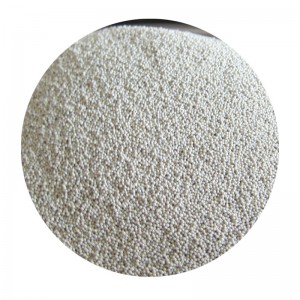Unique Sand Casting A Timeless Technique with Modern Applications
Sand casting, one of the oldest and most versatile metal casting techniques, has evolved remarkably over the centuries. This process, which involves pouring molten metal into a sand mold to create a desired shape, has remained relevant in contemporary manufacturing. What sets unique sand casting apart is its ability to produce intricate designs, cater to varying production volumes, and maintain cost-effectiveness, making it a favored choice across various industries.
The Basics of Sand Casting
The sand casting process begins with creating a mold from a mixture of sand, clay, and water. The sand is packed around a pattern, which is a replica of the final product. Once the mold halves are assembled, they form a cavity into which molten metal is poured. After the metal has cooled and solidified, the sand mold is broken away, revealing the final casting. This method lends itself to a wide range of metals, including iron, aluminum, copper, and brass, thereby providing flexibility in product design.
Unique Features of Sand Casting
1. Design Complexity One of the most significant advantages of unique sand casting is its capacity to produce complex geometries and detailed designs. The pliable nature of sand allows for fine detailing, making it possible to create intricate patterns, intricate features, and even undercuts that would be difficult to achieve using other methods. This capability is vital for industries like automotive and aerospace, where precision and complexity are paramount.
2. Cost-Effectiveness Sand casting is a cost-effective choice for both small and large production runs. The materials used—primarily sand, along with a binder—are relatively inexpensive. Moreover, the casting process allows for lower tooling costs compared to other methods, such as investment casting. This makes it an ideal option for startups and small businesses looking to minimize expenses while still producing high-quality parts.
unique sand casting

3. Material Versatility Unique sand casting can accommodate a variety of metals and alloys. This flexibility enables manufacturers to choose the best material for their product's specific needs—whether that be strength, weight, or corrosion resistance. The ability to work with ferrous and non-ferrous metals alike means that a vast array of products, from decorative items to structural components, can be created using sand casting.
4. Sustainability Aspects With the growing awareness of environmental concerns, unique sand casting has adapted by introducing more sustainable practices. Many foundries have started using reclaimed sand, reducing waste and the need for new materials. Additionally, modern technological advancements, such as 3D printing, have begun to intertwine with traditional sand casting, allowing for even more efficient and eco-friendly production methods.
Applications Across Industries
The versatility of sand casting makes it applicable in various industries. In the automotive sector, sand casting is used to manufacture engine blocks, transmission housings, and various other components, ensuring they meet stringent performance requirements. The aerospace industry also benefits from this technique, utilizing it to produce lightweight yet robust parts that are essential for flight safety.
Moreover, the artistic community has embraced unique sand casting by creating sculptures, decorative items, and custom pieces, pushing the boundaries of traditional casting techniques. The ability to experiment with designs and materials attracts artisans and designers seeking to create standout works that cannot be achieved through mass production methods.
Conclusion
Unique sand casting remains a timeless and dynamic technique in the world of manufacturing. Its ability to produce complex shapes, adaptability to various materials, cost-effectiveness, and sustainable practices position it as a crucial component in modern production processes. As technology continues to advance, the future of sand casting looks promising, offering new opportunities for creativity and innovation in producing unique metal objects that cater to ever-evolving industry needs. In embracing both tradition and modern advancements, unique sand casting retains its relevance, continuing to inspire industries and artisans alike.
Post time:ຕ.ລ. . 21, 2024 06:04
Next:Exploring the World of Sand Casting and Its Foundry Applications and Innovations
